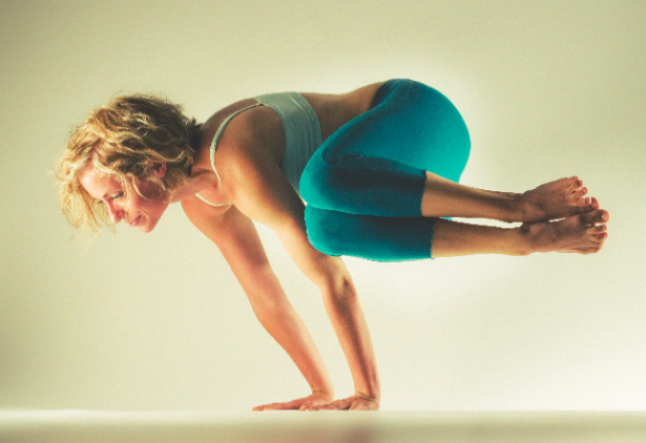bakasana and parsva bakasana | crow and side crow

why
Bakasana and parsva bakasana are both on the more accessible spectrum of arm balances. They provide a strong challenge to the breath, dristi (gaze) and dharana (concentration). But most importantly, they impart joy, joy in the ability to lift off away from the ground and feel the strength of the body, and the laughter of trying, falling and getting back up again. As a newly sprouted yogini, I had no idea what an arm balance was or where to begin. The first time I saw my teacher go into parsva bakasana, my jaw nearly hit the floor. Then I followed in my jaw’s footsteps about a second later when I tried the pose. How did she defy gravity and continue to smile and laugh at the same time? Even though I had just face-planted, I could not help but smile. The grace and ease with which she lifted her body away from the ground still resonates with me today. That single memory continues to inspire me as I share my love of arm balances with my students every day.
how
Bakasana: Step the feet together and come into a squat with the knees and big toes touching. Keeping the gaze on one point, slowly separate the knees. Extend the arms and hover both the arms and torso above the ground. Feel the release in the lower back and take a few breaths. Place the hands onto the mat as close as possible toward the body, staying low. Hug the inner knees onto the triceps as far up toward the armpits as is comfortable in the body. Continue to gaze forward and lift the bottom away from the heels. Transfer more weight into the balls of the feet as you elongate your arms. Send your energy forward and rock onto the tips of the big toes. Lean this weight forward until both toes leave the mat. Once you are airborne, pull the feet up toward the bottom, keeping the inner heels touching. Root the hands and pull the shoulders up toward the sky to straighten the arms. Remember to keep the gaze and energy forward.
Twist it: Begin in parivrtta utkatasana (twisted chair pose). Come into a full squat and deepen the twist. Place both palms flat onto the ground, shoulder distance apart, and take your gaze forward. Squeeze the legs together, cultivating energy into your core. Staying compact, begin to bend into chaturanga (plank pose), shifting the weight of your legs onto your arms. Pull the feet away from the ground, working them in line with your knees, and then potentially begin to lift your shoulders and belly to work toward straight arms. If this is too deep of a twist, work twisted chair pose until you can come into a full squat and maintain the twist. And remember: This is a journey, so enjoy the ride!
who
My mentor Maty Ezraty once told me, “Through your practice you will find your passion. Teach what you love.” I took those words to heart, and through time, found that I not only had a natural ability for arm balances, but I knew how to make them accessible to all levels of students. I discovered hatha yoga’s magical ability to tap into the unexplored potential of the body. There is nothing like defying gravity with grace and strength. Every time I lift off, there is that humble moment of, “Wow!” As a teacher of these asanas, I get to see sunlight pour over someone’s face as they find the exuberance of an arm balance for the first time. It reminds me that we truly are divine beings, and that we have all the resources we need within us. My simple mantra as a teacher is this: Breathe in, laugh out, love life, do hatha yoga.